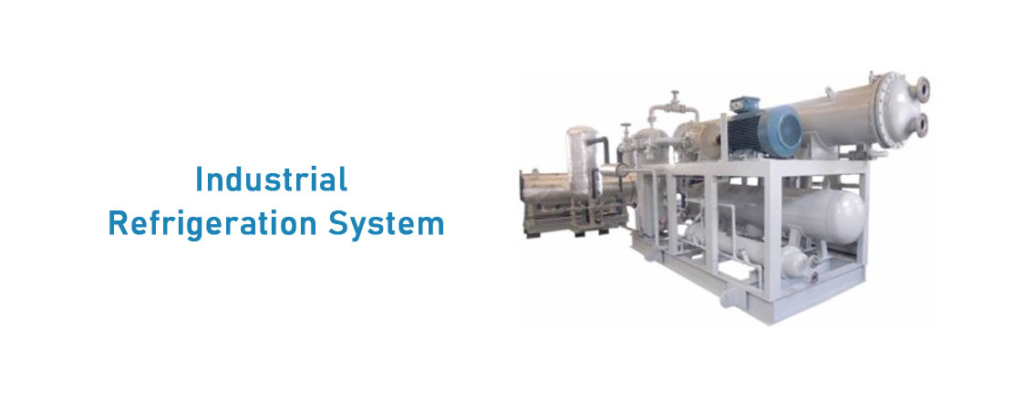What are the 4 main components of a Chiller system?
Think back to the main parts of any chiller system:
- Compressor,
- Condenser,
- A metering device, and
- Evaporator.
We will talk in-depth about each of these parts of a chiller system.
Compressor
It is important to remember that the primary function of the compressor is to raise the pressure of the industrial refrigeration system. In chillers, we often encounter the following kind of compressors.

Air compressors that use a revolving door,
- Compressors with scrolls,
- Machines that use screw-like blades to compress air and
- Air compressors that use centrifugal force.
- Keep in mind that we may classify them by their function.
Keep in mind that the motor is what pushes the pistons in the compressor that uses the reciprocating motion. A car engine is the best analogy for how they function. Nowadays, nobody uses them because of their annoying noise and inefficiency and high maintenance costs. The capacity of these chillers is up to 100 tons, making them ideal for smaller installations.
Condenser
Don’t forget that the condenser’s primary function is to reduce the refrigerant’s temperature. There are primarily three types of condensers used in chiller systems:
- Condenser with fins and tubes,
- In-line micro channel condenser, and
- Condenser with shell and tubes.
The structure of these condensers is used to categorize them.
Metering device
Keep in mind that the function of the metering device is to lower the refrigerant pressure. There are two basic categories of meters used in chiller systems:
- Expansion sleeve for heat, and
- Vacuum expansion electronic valve.
We’ll go into the specifics of how these meters function in chillers.
Remember that the TEV or TXV also refers to the thermostatic expansion valve. This is a common component in home air conditioning, heating and cooling (HVAC) systems and commercial chiller plants. The evaporator’s output temperature regulates how much refrigerant goes into the evaporator.
Evaporator
Evaporators in home air conditioning and ventilation systems are notorious for leaking refrigerant. When the air in a room passes over the evaporator coils, it may be either heated or cooled, depending on the temperature desired.
An evaporator, often a shell and tube design, is a standard component in chiller systems. You may recall that a shell and tube evaporator is a huge metal casing holding a collection of copper tubes.
Chillers use water instead of air to cool the refrigerant in the evaporator coils. In this way, the water is cooled by the refrigerant.



